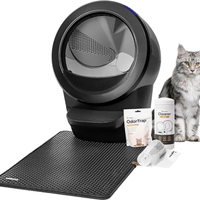How do self-cleaning litter boxes work? Plus, the pros and cons, according to our vet
Get the scoop on smart solutions for kitty waste disposal
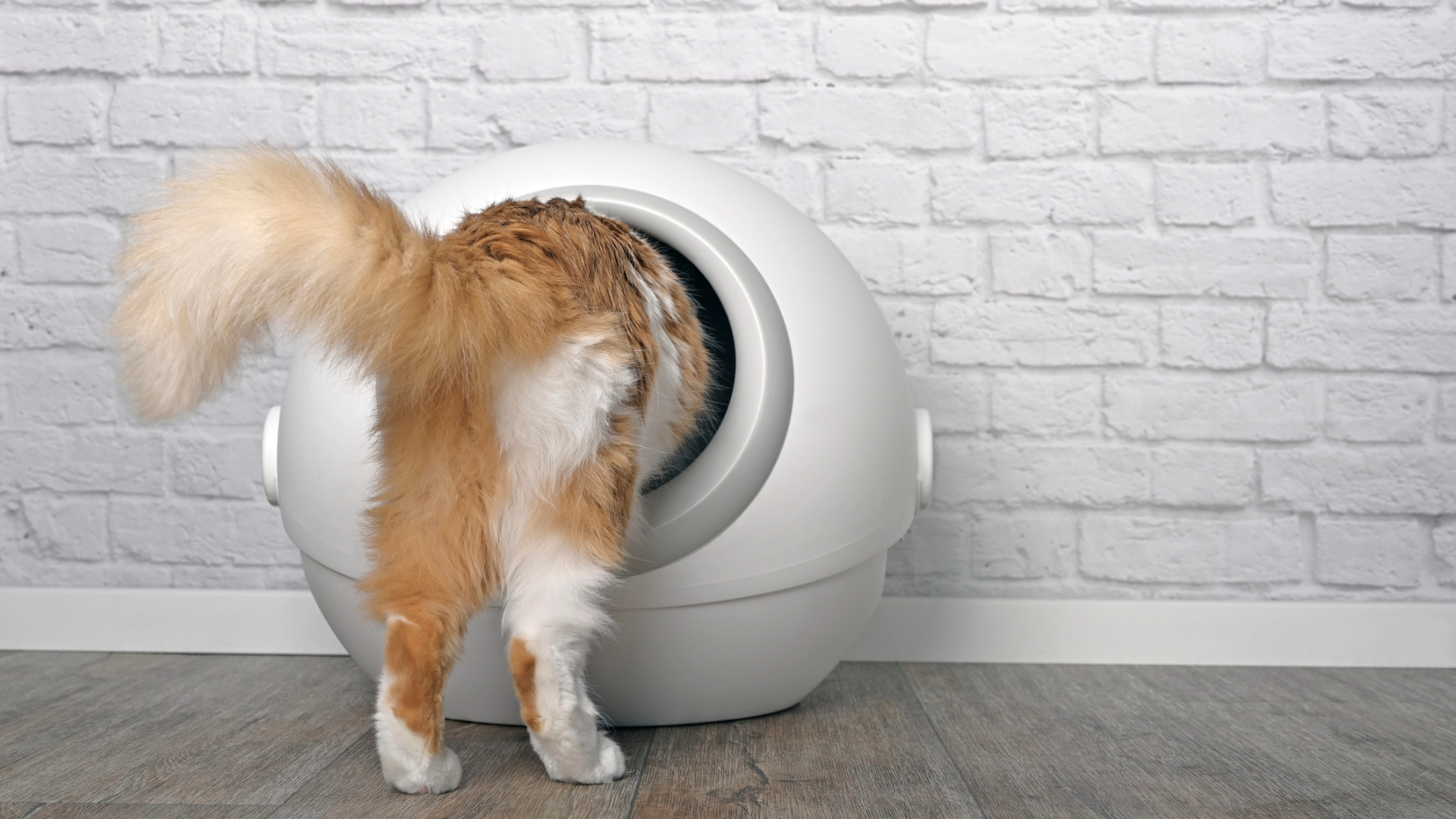
Are you wondering how do self-cleaning litter boxes work? The best automatic cat litter boxes have become an increasingly popular option for cat owners looking to reduce the hassle of daily scooping and control litter box odors more effectively.
Lots of owners come across self-cleaning litter boxes when searching for the best option for their furry friend, but are they as good as they claim to be?
I am a practicing vet with more than 13 years of experience working with cats and advising pet owners on litter box hygiene. I understand how important it is to provide a clean and stress-free toileting environment to ensure your cat is healthy and happy.
This article will explain how automatic cat litter boxes work and whether they are a good idea. We will explore how these automated systems function, discuss their pros and cons, and help you decide whether they’re a good choice for your feline companion.
Without further ado, let’s take a closer look at self-cleaning litter boxes to determine if they live up to the hype.
How do self-cleaning litter boxes work?
Self-cleaning litter boxes are designed to automatically remove waste after your cat has used them, supposedly eliminating the need for daily scooping.
These systems typically function through sensors that detect when a cat has entered and exited the litter box. After a certain amount of time, the mechanism activates to sift or rake through the litter, separating waste from clean litter and depositing it into a sealed waste compartment.
There are several types of self-cleaning litter boxes available:
- Raking mechanisms: A metal or plastic rake moves through the litter to collect waste, pushing it into a separate compartment.
- Rotating systems: The entire litter chamber rotates, sifting out clean litter while directing waste into a separate compartment.
- Flushing systems: Some high-end models connect to plumbing and flush waste away automatically, similar to a toilet.
Most self-cleaning litter boxes require clumping litter, as the automation process relies on the waste forming solid clumps. Depending on the model, waste collection compartments may need emptying every few days to a week, and full litter replacements are usually recommended every month.
Self-cleaning litter boxes are designed to help reduce odors from urine and feces. Whether the smell can still be detected will depend on several factors, including the type of litter used, the cleaning mechanism in place, and how well the unit is maintained.
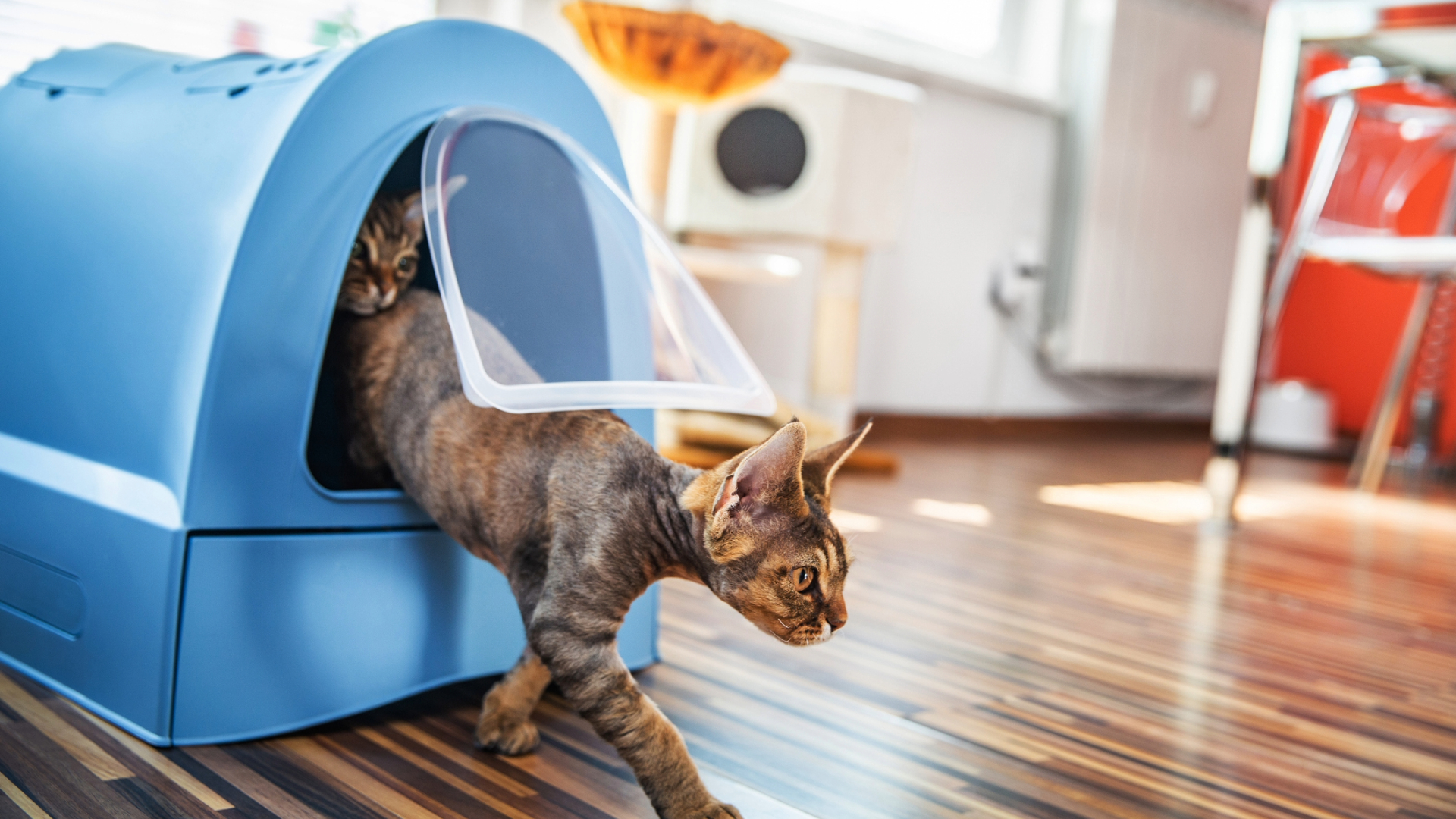
Advantages of automatic litter boxes
Many cat owners appreciate self-cleaning litter boxes for their convenience, but they also offer several other advantages:
- Reduces odors: By promptly removing waste, self-cleaning litter boxes help control odors more effectively than traditional litter boxes.
- Lower maintenance: These systems minimize the need for daily scooping, making them ideal for busy cat owners.
- Improved hygiene: Keeping the litter box consistently clean reduces bacterial buildup and may decrease the risk of urinary tract infections in cats. It will also reduce the spread of bacteria from cats stepping in the soiled litter and walking around the home afterward.
- Better for multi-cat households: In homes with multiple cats, a self-cleaning litter box can keep the litter box fresher for longer. Lots of cats will not use a soiled litter tray if another cat has been in there before them.
- Encourages litter box use: Some cats may be more inclined to use a cleaner litter box, helping prevent inappropriate elimination outside the box.
Whisker Litter-Robot 4 + Accessories Bundle | Amazon
One of the top-rated self-cleaning litter boxes available today is the Litter-Robot 4. This is an advanced model that features a fully enclosed rotating design that efficiently removes waste and helps control odors. It has a spacious interior and can accommodate cats of all sizes. It includes a WiFi-enabled app that tracks your cat’s litter box habits.
Disadvantages of automatic litter boxes
While self-cleaning litter boxes offer many benefits, they also have some drawbacks that cat owners need to consider:
- Expensive initial cost: These units tend to be significantly more expensive than traditional litter boxes.
- Ongoing maintenance costs: There are some extra costs involved including special waste receptacles, liners, or specific types of litter for certain makes and models. This can add to long-term costs.
- Noise and movement: The mechanical noise and movement can be startling to some cats, potentially discouraging them from using the box.
- Not ideal for all cats: Kittens, elderly cats, or those with mobility issues may struggle with the size or entry height of some models.
- Potential for malfunctions: Sensors and mechanical components may fail over time, requiring repairs or replacement parts.
- Can be harder to clean than a traditional litter box: Some litter boxes can end up being more difficult to empty and clean out compared to a standard litter box.
- Harder to detect signs of health problems: Self-cleaning litter boxes can make it harder to detect certain health problems experienced by cats because they remove the waste products automatically. This reduces the opportunity for owners to spot important changes in their cat’s urine or feces.
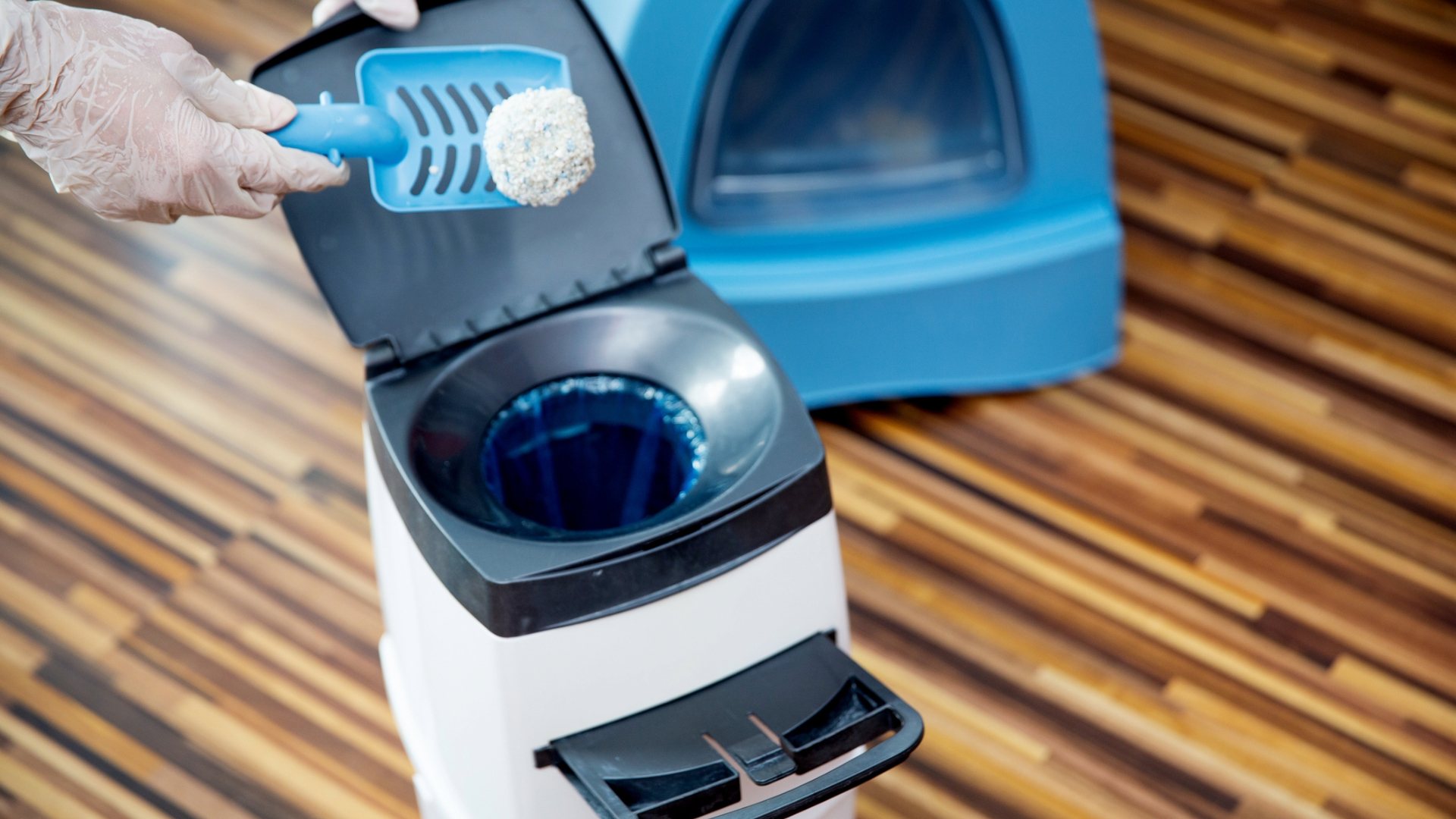
Do vets recommend automatic litter boxes?
Vets generally agree that a clean litter box is essential for a cat’s health and wellbeing. However, opinions on self-cleaning litter boxes are mixed.
Some vets recommend them for households where maintaining a consistent cleaning routine is difficult, as they help prevent litter box aversion and hygiene-related health issues. However, they may not be suitable for every cat.
Some vets voice concerns that self-cleaning litter boxes can make it more difficult to monitor a cat’s health. Changes in motions, such as increased urination, diarrhea, constipation, or blood in cat stool, are often the first signs of illness.
Due to the fact self-cleaning boxes dispose of waste quickly, owners may miss these crucial warning signs. Additionally, some cats may dislike the movement and noise. This may result in them refusing to use the litter box and going elsewhere in the house.
Vets don’t universally discourage the use of self-cleaning litter boxes, but they do stress the importance of continued health monitoring. While these litter boxes can be a convenient tool for cat owners, they should never replace direct observation of a cat’s elimination habits.
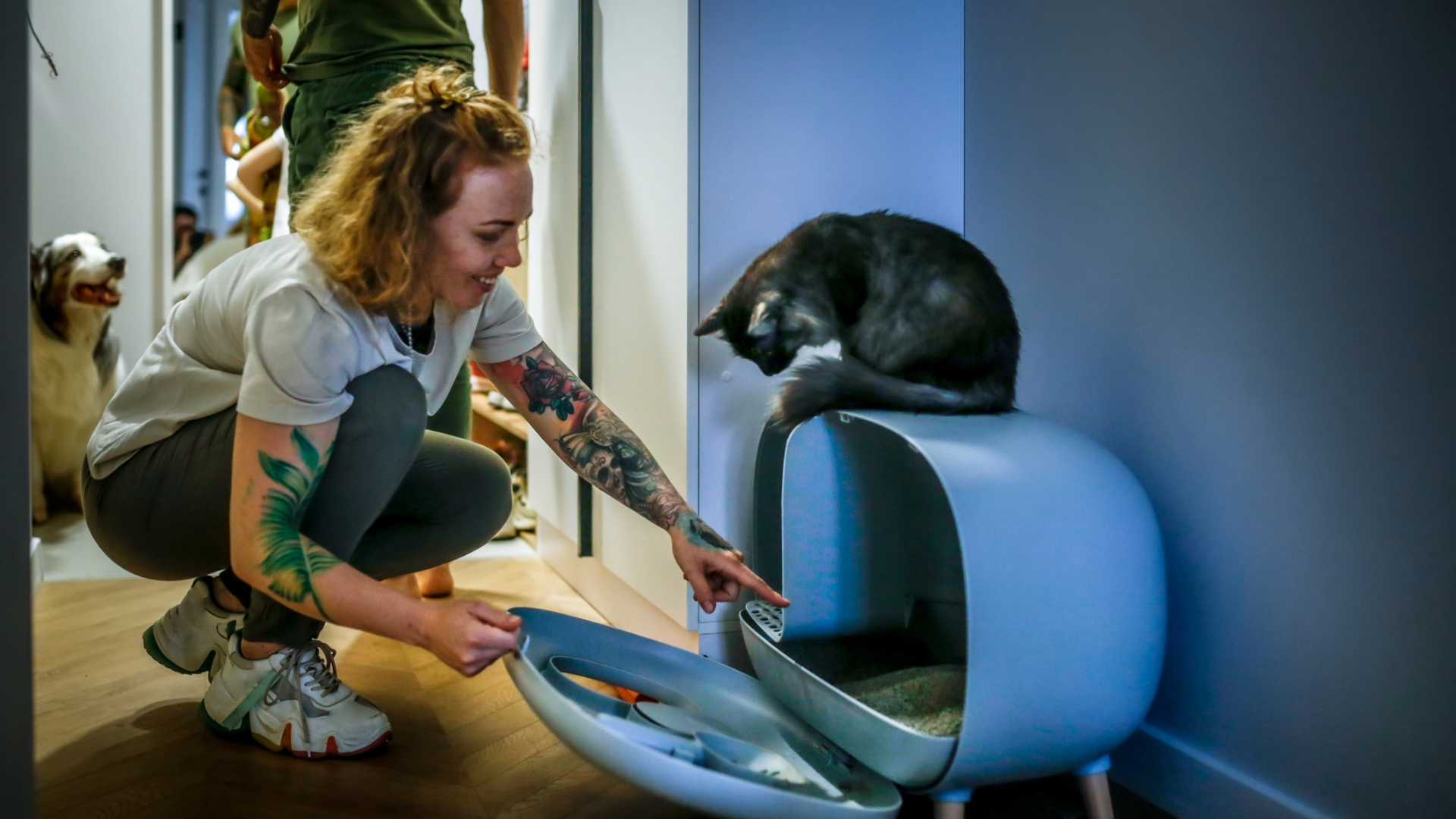
How to introduce your cat to a self-cleaning litter box
If using an automatic litter box, responsible pet owners should take extra steps to ensure their cat’s well-being and be vigilant about any potential health concerns.
To ensure a smooth transition to a self-cleaning litter box, follow these vet-approved tips:
- Gradual introduction: Place the new litter box next to the old one and allow your cat to explore it before activating the cleaning mechanism.
- Monitor your cat’s behavior: If your cat seems hesitant or stressed by the automatic feature, consider switching to a quieter model or turning off the cleaning function initially.
- Choose the right model: Look for a box that suits your cat’s size and mobility needs, ensuring they have easy access.
- Keep a backup box: Some cats prefer having a secondary, non-automatic litter box available.
Read next: How often to clean a cat litter box and our favorite cat litter hacks to make your life easier. Or, check out the best cat litter, recommended by real pet parents

Emma graduated from the Royal Vet College in London in 2011. She has a keen interest in surgery and went on to do a postgraduate certificate in small animal surgery and was then awarded advanced practitioner status in the same discipline.
Edited by Megan Milstead.
This page was last updated in April 2025 by Emma Chandley.
PetsRadar Newsletter
Get the best advice, tips and top tech for your beloved Pets
Emma Chandley is a vet with 14 years of experience and has a keen interest in surgery. After graduating from the Royal Vet College in London in 2011, she achieved a postgraduate certificate in small animal surgery from the British Small Animal Veterinary Association and Nottingham Trent University. She was then awarded advanced practitioner status in the same discipline by The Royal College of Veterinary Surgeons. She has a black Labrador and two pygmy goats at home.
